Uniformity Coefficient Of Soil
Soil classification in the Englishspeaking world. Uniformity Coefficient Cu The uniformity coefficient Cu is defined as the ratio of D60 to D10.
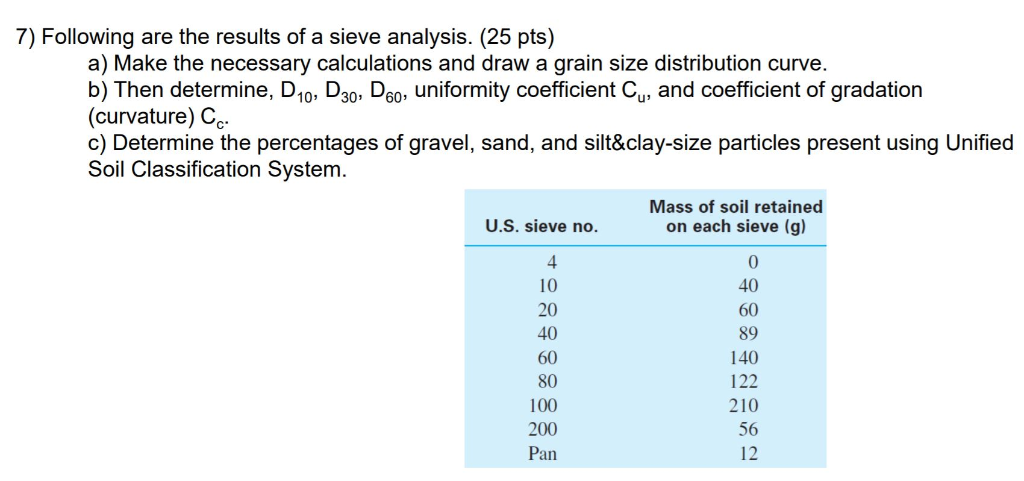 Solved 7 Following Are The Results Of A Sieve Analysis Chegg Com
Solved 7 Following Are The Results Of A Sieve Analysis Chegg Com
Cu is always greater than 1 equal to 1 is possible only by theoreticalIf Cu is closer to 1 ie.

Uniformity coefficient of soil. The coefficients of curvature and uniformity may be used to describe the degree of uniformity of coarse grained soils. Thus the larger a soil grain is the faster it settles in water. Uniformity Coefficient Cu The uniformity coefficient Cu is defined as the ratio of D60 to D10.
In this paper the coefficient of permeability evaluated using the Hazen 8 and Carrier 10 formulae yielded relatively good results in the uncemented sand layer. This parameter is used to classify the soil as well graded or poorly graded and is given by the relation as below. The uniformity coefficient Cu curvature coefficient Cc and the effective size D10 are the grading characteristics of the soil.
D 10 is the particle size by which 10 of the soil by weight is finer than that particle size. They are calculated as follows. The steps in grading a soil are data collection calculating coefficients of uniformity and curvature and grading the soil based on the grading criteria given in the used soil classification system.
The uniformity coefficient Cu and the coefficient of gradation Cc are the measures of soil gradation. Table A3 The Unified soil classification system. Cc D302 D60D10.
Effective Size Uniformity Coefficient and Coefficient of Gradation Three basic soil parameters can be determined from these grain-size distribution curves. Here the term C u is coefficient of uniformity D 30 is grain diameter below which there are 30 of particles present in the sample D 60 is grain diameter below which the 60 of particles exist and D 10 is grain diameter below which the 10 of particles exist. The uniformity coefficient Cu and the coefficient of gradation Cc are the measures of soil gradation.
Measures of Gradation Engineers frequently like to use a variety of coefficients to describe the uniformity versus the wellgradedness of soils. Poorly graded soil like beach sand has the uniformity coefficient value about 2 or 3. What is the use of this Cu and Cc.
Uniformity coefficient Cu and Coefficient of curvature Cc can also give us an idea of soil nature. It is denoted by C u. A value of Cu greater than 4 to 6 classifies the soil.
This critical fact is used in the hydrometer testing to obtain GSDs for finegrained soil. COEFFICIENT OF UNIFORMITY AND CURVATURE. That is Cu D60 D10 113 For curve A in Fig15 the uniformity coefficient is.
Uniformity Coefficient C u which is a measure of the uniformity of grain size in the soil and is defined as the ratio of the 60 finer size D 60 to D 10. It was developed from a system proposed by Casagrande 1948 and referred to as the Airfield. Cc D30 2 D10xD60 WhereD10 D30 or D60 are diameters for 10 30 and 60 passing respectively.
These coefficients help to classify the soil as well graded or poorly graded ones. The smaller coefficient of uniformity value means that the sample gradation is uniform. D60 and D10 sizes are close to each other which means there are more no.
Is the coefficient of uniformity and C c is the coefficient of curvature. This is because soil classification requires the determination of the uniformity coefficient C u and the coefficient of curvature C c which are functions of D 10. Good well graded soil may have the value of C u about 15 or greater.
Effective size Uniformity coefficient Coefficient of gradation The diameter in the particle-size distribution curve corresponding to 10 finer is defined as the effective. The coefficient of uniformity is a crude shape parameter and is a dimensionless ratio of the diameters of grains of sediment or particles of soil used to distinguish between well-graded and poorly graded coarse-grained soil using results from laboratory tests of grain size distribution. The uniformity coefficient Cu and the coefficient of gradation Cc are the measures of soil gradation.
Uniformity coefficient means a value which is the ratio of D60 to D10 where D60 is the soil diameter of which 60 percent of the soil weight is finer and D10 is the corresponding value at 10 percent finerA soil having a uniformity coefficient smaller than 4 would be considered uniform for purposes of this regulation. Cu 057 014 41 which indicates a relatively uniform soil sometimes referred to as poorly graded. Finer by Mass 100 50 0 75 10.
Uniformity coefficientCu The uniformity coefficient is a measure of particle size range and given by the ratio of D 60 and D 10 size of particles. Of particles are in the same size range the soil is considered as uniformly graded. These coefficients help to classify the soil as well as graded or poorly graded ones.
These coefficients help to classify the soil as well graded or poorly graded ones. The value of C u equal to 1 means that the soil consists of only one grain size. Click to see full answer.
A value of Cu greater than 4 to 6 classifies the soil as. Soil gradation is determined by analyzing the results of a sieve analysis or a hydrometer analysis. Cc Coefficient of curvature.
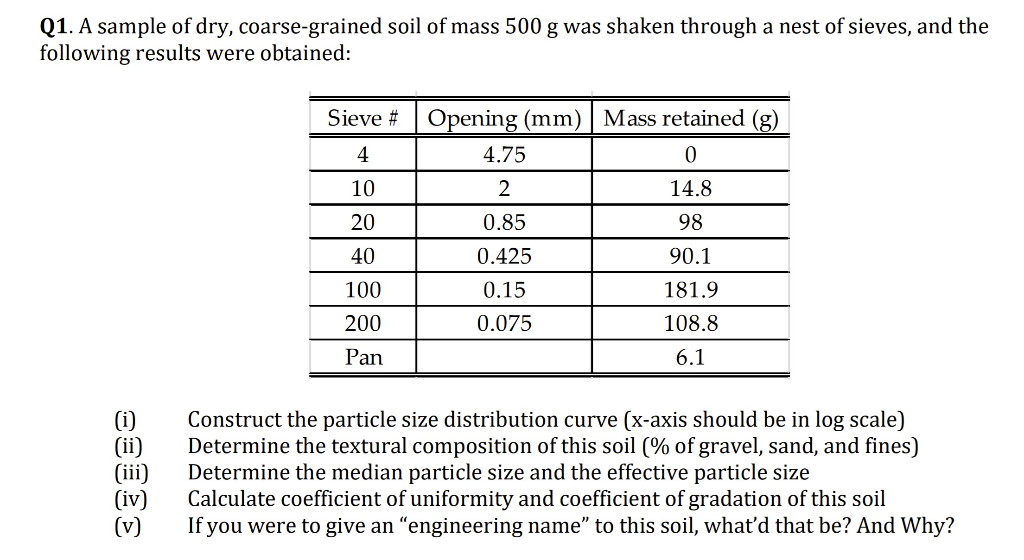 Solved Q1 A Sample Of Dry Coarse Grained Soil Of Mass 5 Chegg Com
Solved Q1 A Sample Of Dry Coarse Grained Soil Of Mass 5 Chegg Com
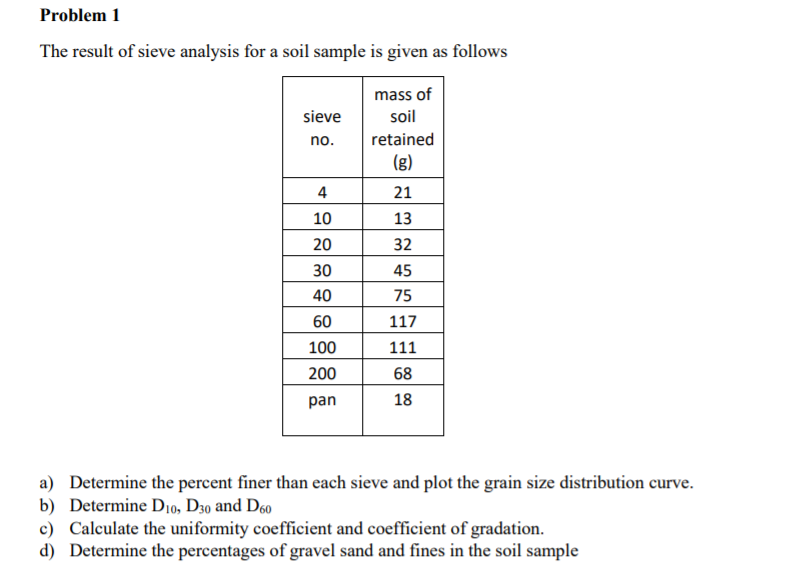 Solved Problem 1 The Result Of Sieve Analysis For A Soil Chegg Com
Solved Problem 1 The Result Of Sieve Analysis For A Soil Chegg Com
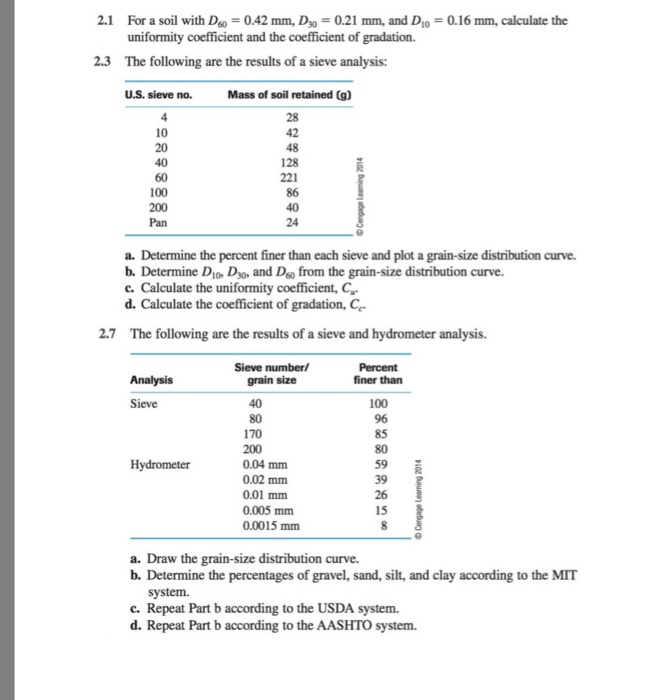
Https Encrypted Tbn0 Gstatic Com Images Q Tbn And9gcq8qozqjteooyzi2rll5qdmcmefwmgrd8hyxnnz0rzwjb5ua3ov Usqp Cau
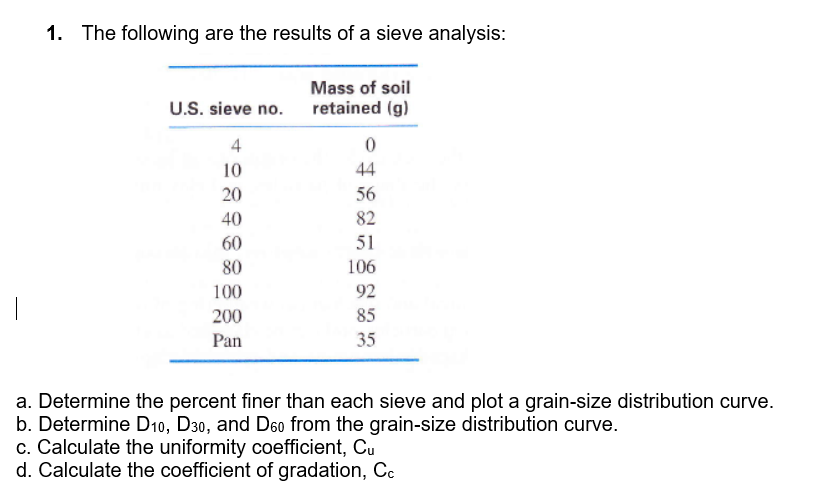 Solved 1 The Following Are The Results Of A Sieve Analys Chegg Com
Solved 1 The Following Are The Results Of A Sieve Analys Chegg Com
 Particle Size Distribution Curve
Particle Size Distribution Curve
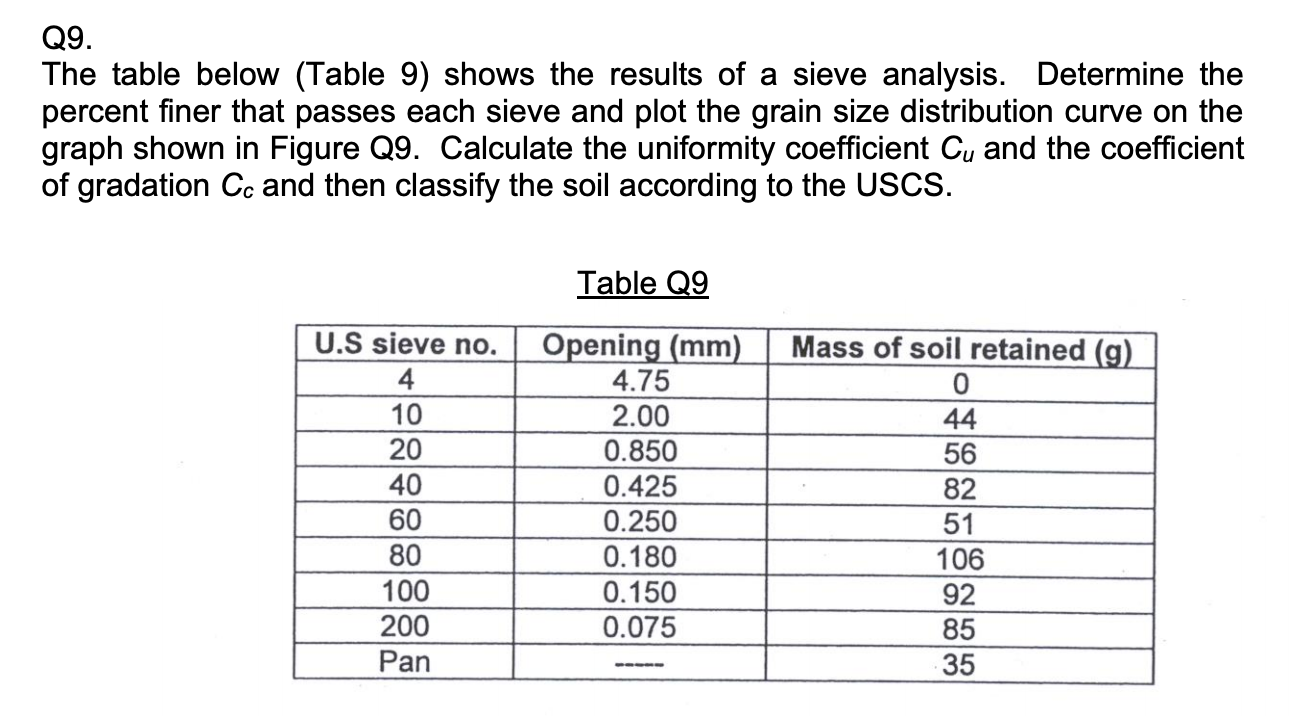 Solved Q9 The Table Below Table 9 Shows The Results Of Chegg Com
Solved Q9 The Table Below Table 9 Shows The Results Of Chegg Com
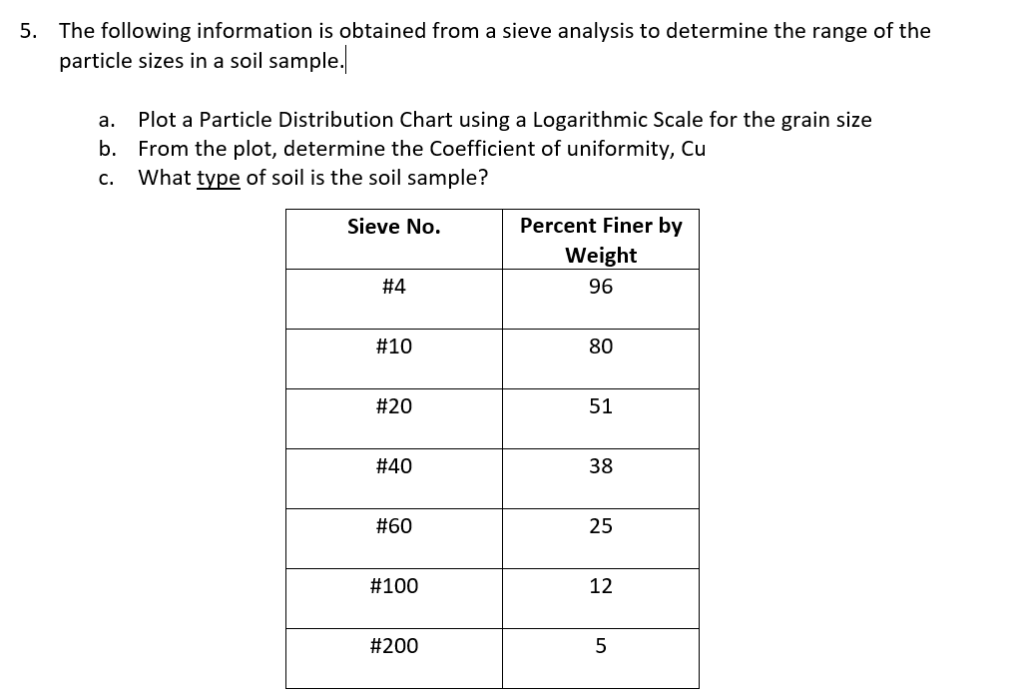 Solved The Following Information Is Obtained From A Sieve Chegg Com
Solved The Following Information Is Obtained From A Sieve Chegg Com
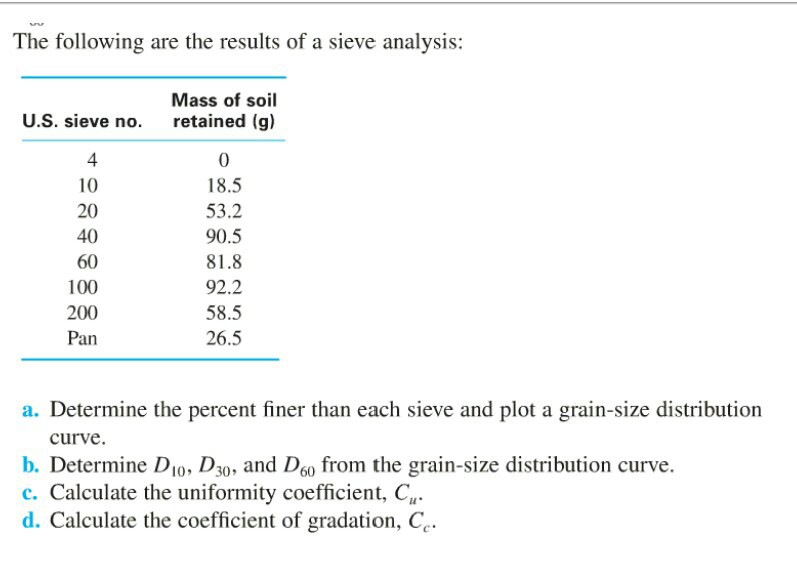
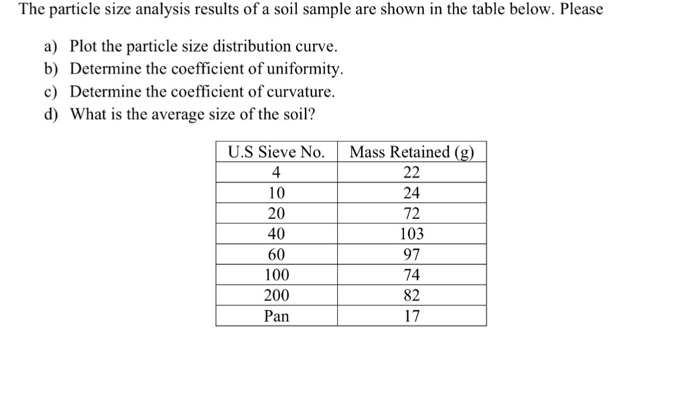
 Solved 1 The Following Are The Results Of A Sieve Analys Chegg Com
Solved 1 The Following Are The Results Of A Sieve Analys Chegg Com
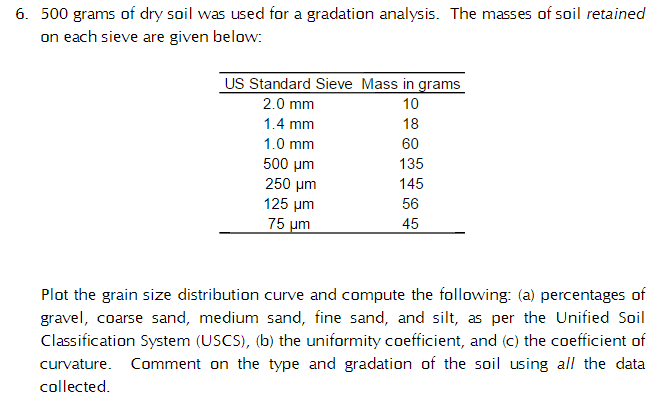 Solved 500 Grams Of Dry Soil Was Used For A Gradation Ana Chegg Com
Solved 500 Grams Of Dry Soil Was Used For A Gradation Ana Chegg Com
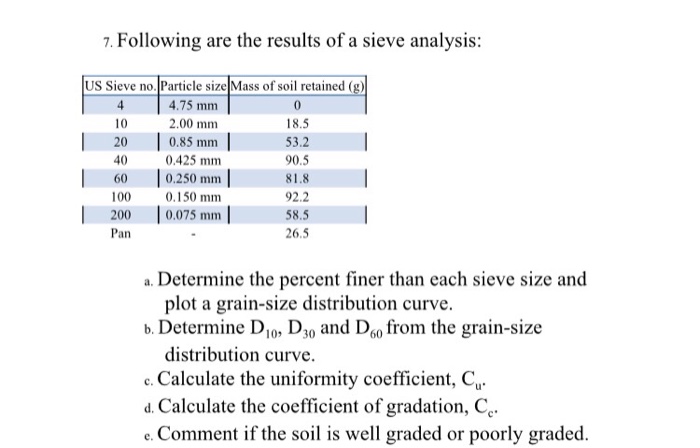
 Solved The Results Of A Sieve Analysis On A Soil Sample W Chegg Com
Solved The Results Of A Sieve Analysis On A Soil Sample W Chegg Com
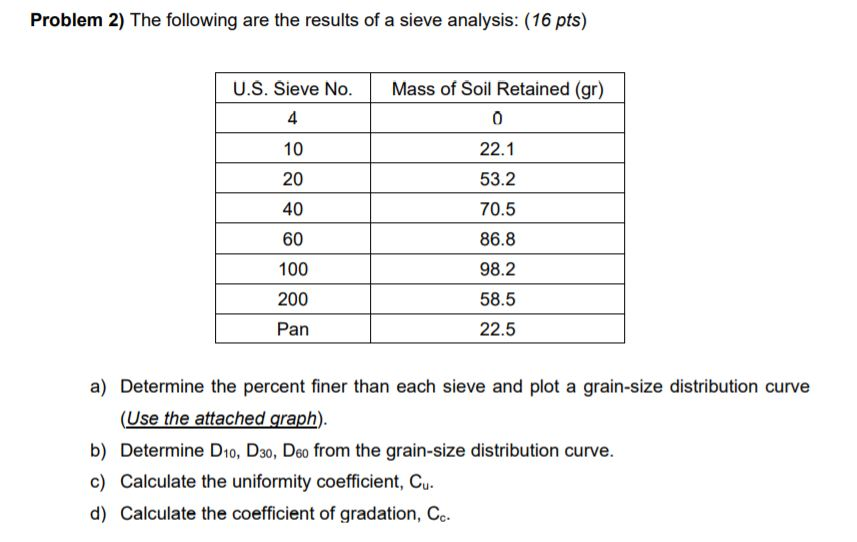 Solved Problem 2 The Following Are The Results Of A Siev Chegg Com
Solved Problem 2 The Following Are The Results Of A Siev Chegg Com
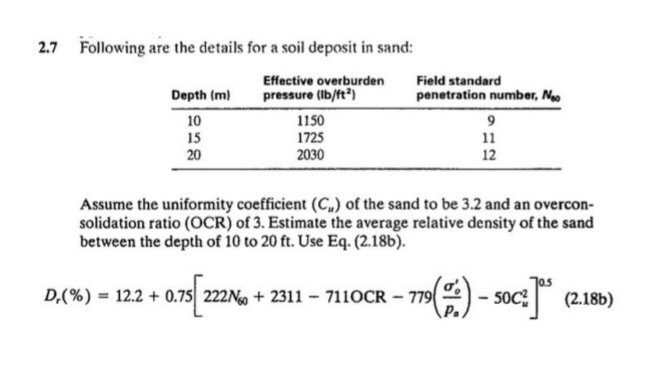 Solved 2 7 Following Are The Details For A Soil Deposit I Chegg Com
Solved 2 7 Following Are The Details For A Soil Deposit I Chegg Com
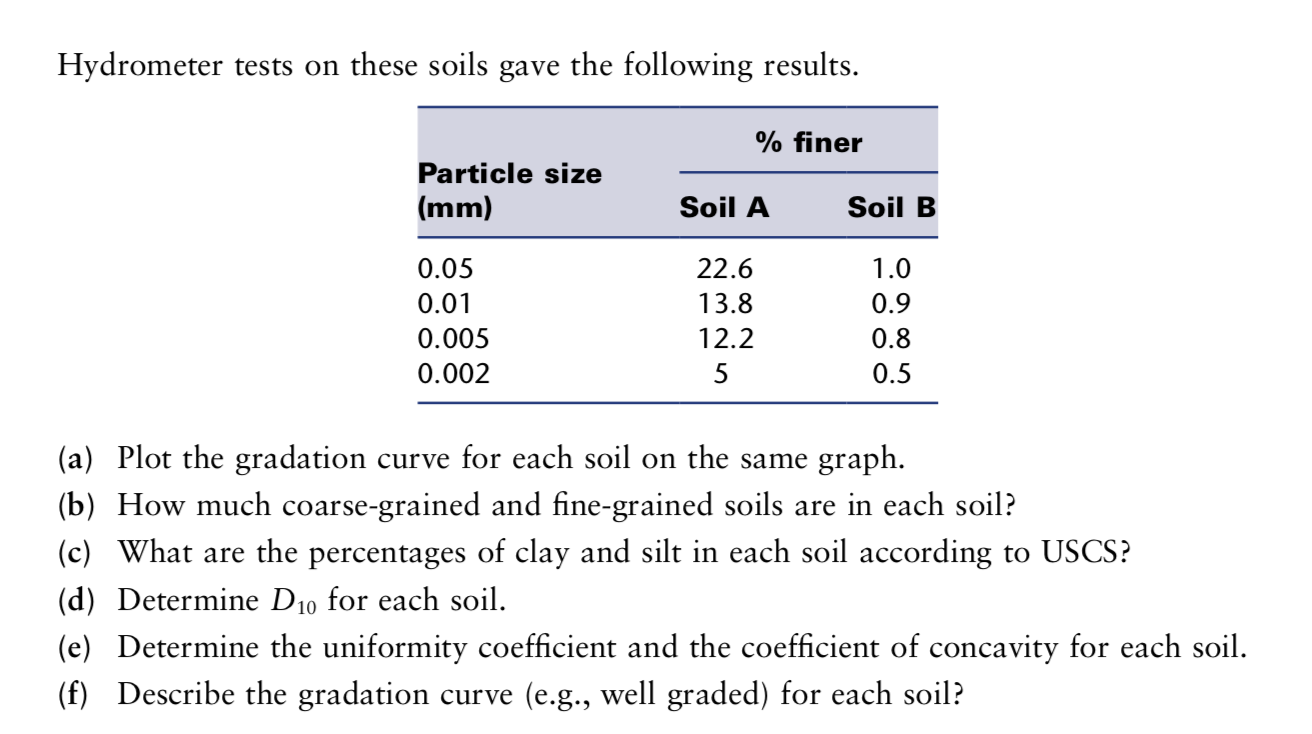 1 12 The Following Results Were Obtained From Siev Chegg Com
1 12 The Following Results Were Obtained From Siev Chegg Com
 Solved Homework 1 The Following Are The Results Of A Siev Chegg Com
Solved Homework 1 The Following Are The Results Of A Siev Chegg Com
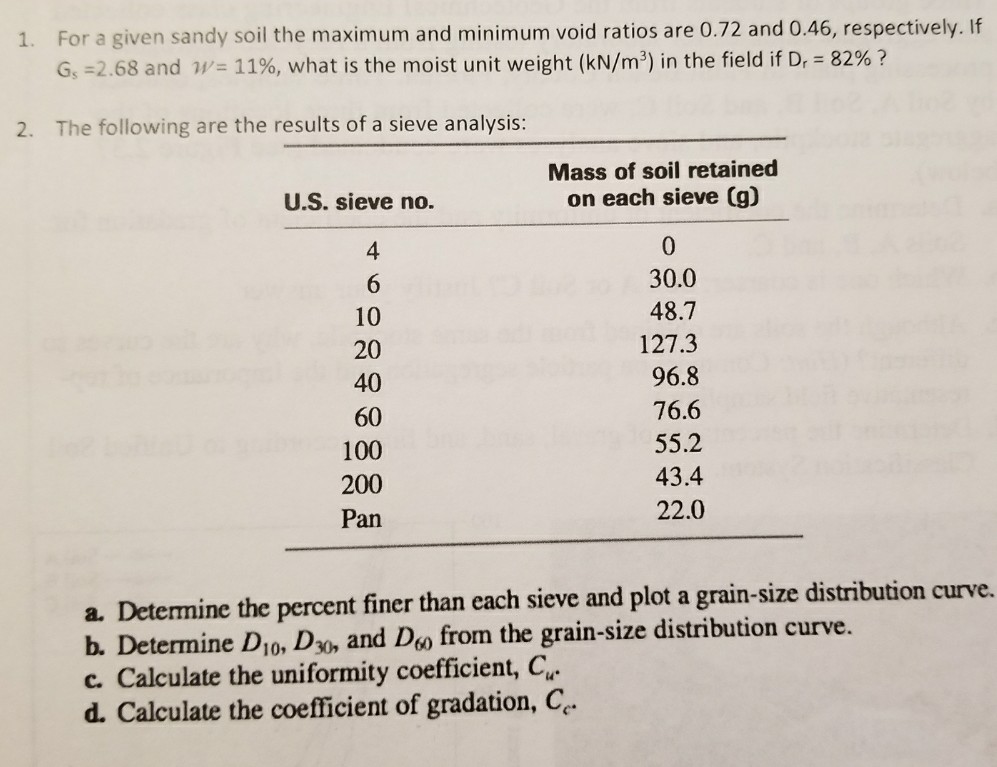
 Solved The Following Are The Results Of A Sieve Analysis Chegg Com
Solved The Following Are The Results Of A Sieve Analysis Chegg Com
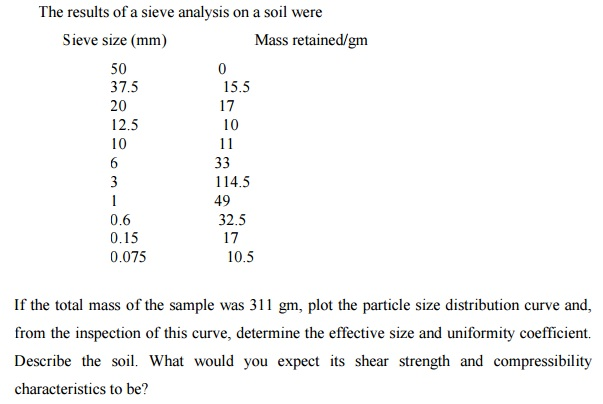 Solved The Results Of A Sieve Analysis On A Soil Were If Chegg Com
Solved The Results Of A Sieve Analysis On A Soil Were If Chegg Com
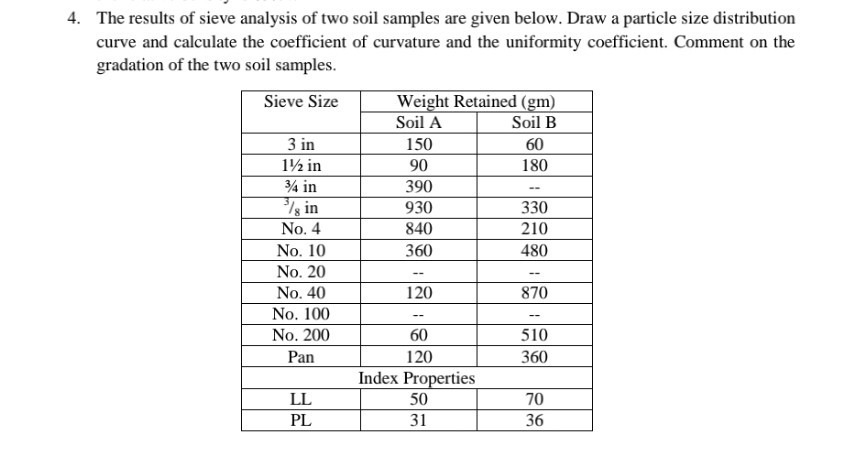
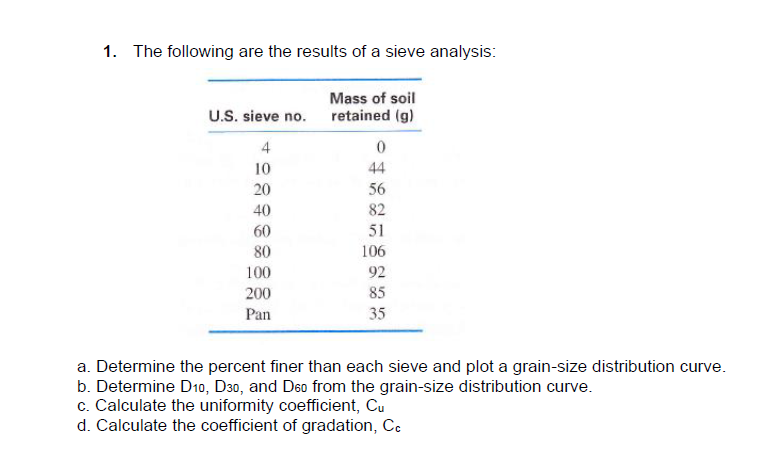 Solved 1 The Following Are The Results Of A Sieve Analys Chegg Com
Solved 1 The Following Are The Results Of A Sieve Analys Chegg Com
 How To Determine Soil Gradation Must Know To Classify Soil Youtube
How To Determine Soil Gradation Must Know To Classify Soil Youtube
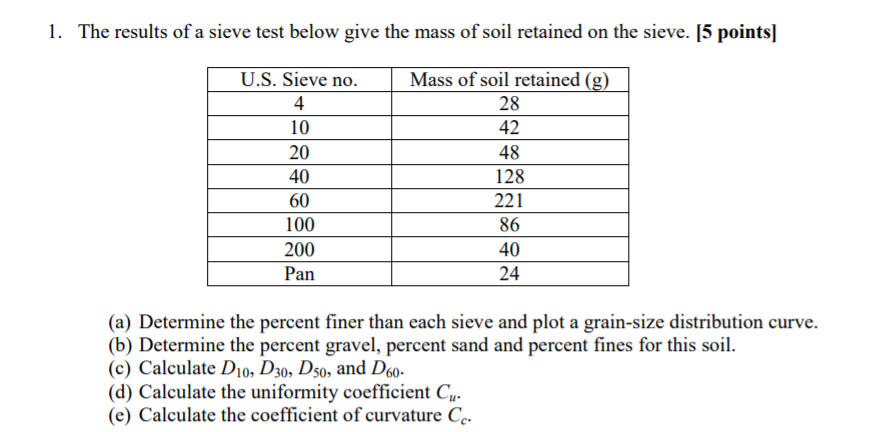 Solved 1 The Results Of A Sieve Test Below Give The Mass Chegg Com
Solved 1 The Results Of A Sieve Test Below Give The Mass Chegg Com
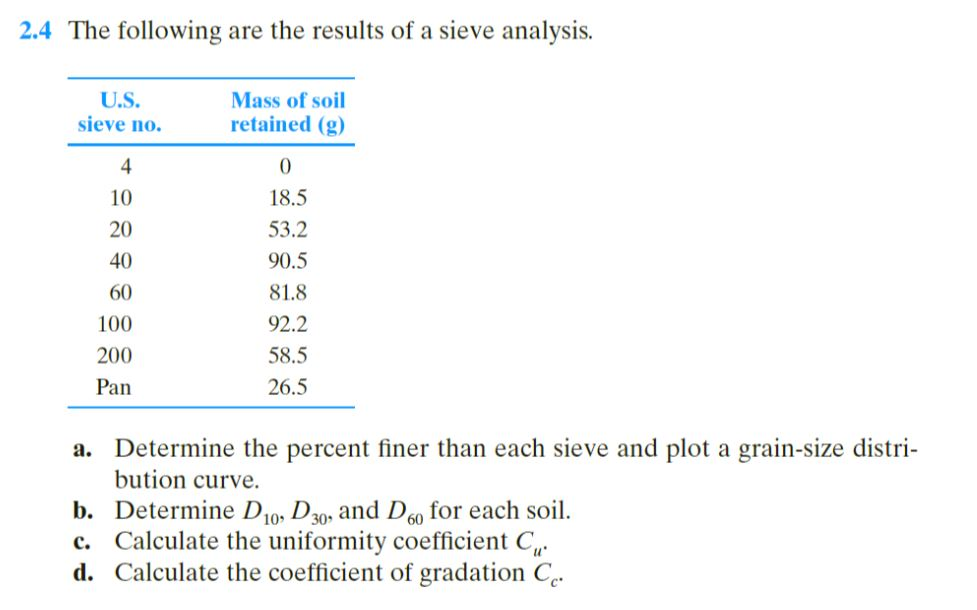 Solved Please Explain How To Find The Values For The Hori Chegg Com
Solved Please Explain How To Find The Values For The Hori Chegg Com
 Solved Problem 2 Sieve Analysis Was Performed On A Soil I Chegg Com
Solved Problem 2 Sieve Analysis Was Performed On A Soil I Chegg Com
 Mean Of The Uniformity Coefficients Of The Soil Water Content During Download Table
Mean Of The Uniformity Coefficients Of The Soil Water Content During Download Table

Posting Komentar untuk "Uniformity Coefficient Of Soil"